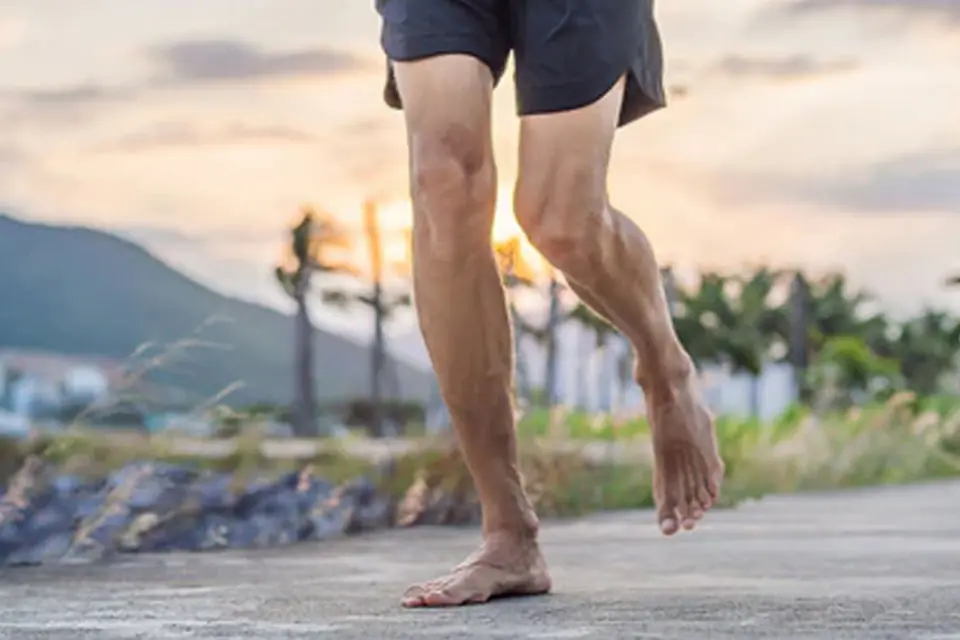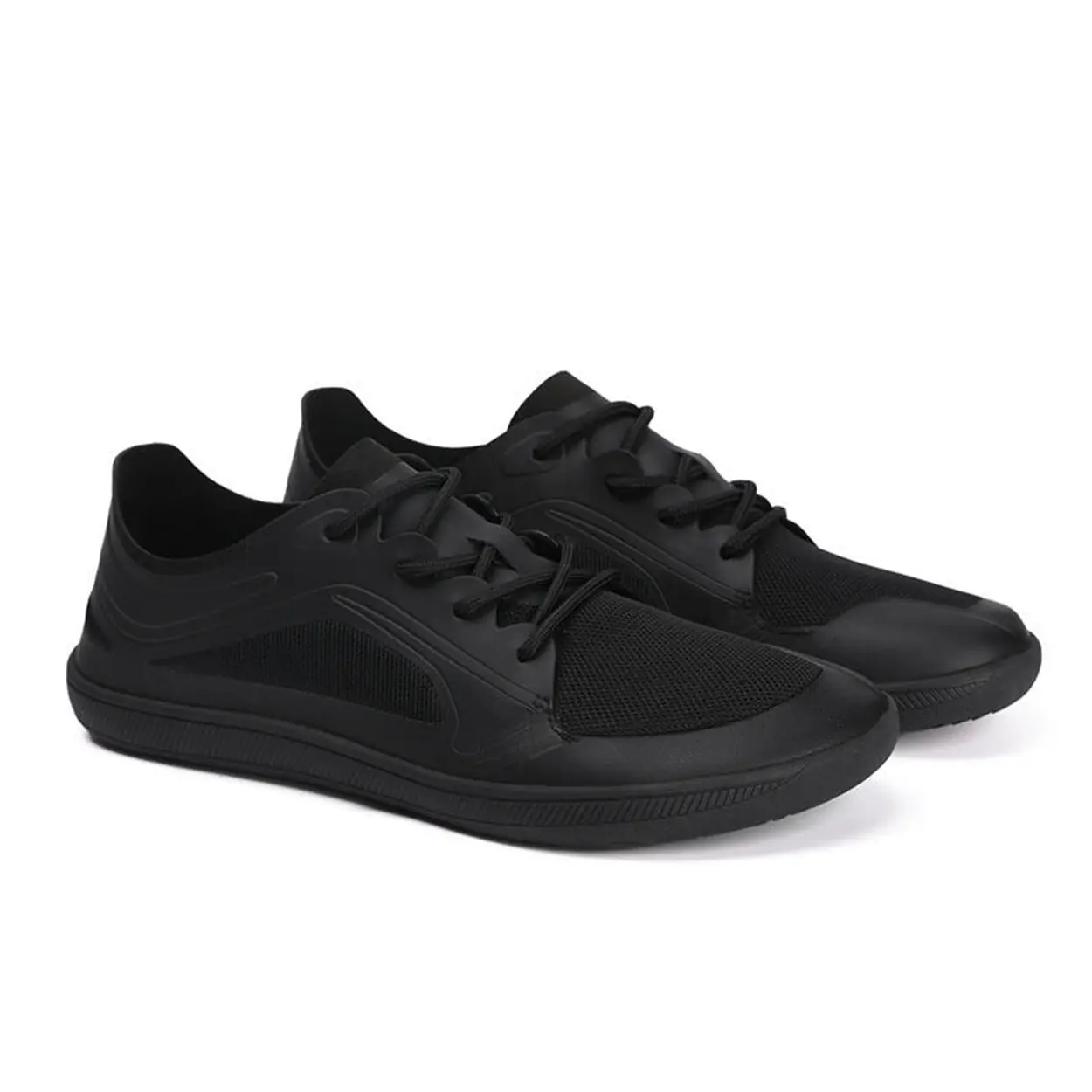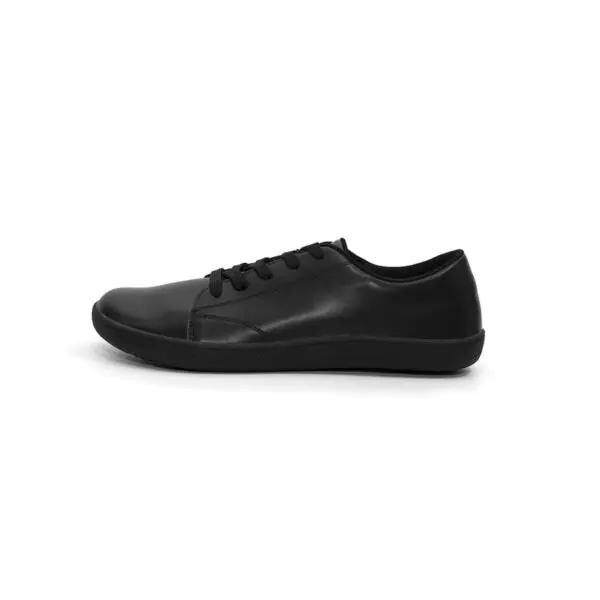
Do Podiatrist Recommend Barefoot Shoes
The Ultimate Guide to Barefoot Running and Minimalist Footwear
Embarking on the journey of barefoot running and minimalist footwear can transform your running experience and overall foot health. This comprehensive guide dives deep into the world of barefoot shoes, exploring their benefits, how they differ from traditional running shoes, and what podiatrists recommend for a healthy transition. Whether you’re a seasoned runner or just starting, understanding minimalist footwear is essential for optimizing performance and preventing injuries.
Table of Contents
What Are Barefoot Shoes and How Do They Differ from Traditional Running Shoes?
Barefoot shoes, also known as minimalist shoes, are designed to mimic the feeling of running or walking barefoot while providing minimal protection to the feet. Unlike traditional running shoes that often feature thick soles, significant arch support, and elevated heels, barefoot shoes offer a thin, flexible sole that allows for natural foot movement and ground feel.
Key Differences:
- Sole Thickness: Traditional running shoes have thick, cushioned soles to absorb impact, whereas barefoot shoes have thin soles for better ground connection.
- Arch Support: Traditional shoes provide substantial arch support; barefoot shoes offer minimal to no arch support, encouraging natural foot mechanics.
- Heel-to-Toe Drop: Traditional shoes often have a higher heel-to-toe drop, promoting a heel-strike running pattern. Barefoot shoes usually have a zero-drop design, encouraging a midfoot or forefoot strike.
- Flexibility: Barefoot shoes are more flexible, allowing your feet to move more naturally compared to the rigid structure of conventional running shoes.
This minimalist approach aims to strengthen the foot muscles and improve biomechanics, potentially reducing the risk of certain injuries.
Why Should You Consider Barefoot Running?
Barefoot running offers several benefits that can enhance your overall running experience and foot health:
- Improved Foot Mechanics: Running barefoot encourages a more natural foot strike, often leading to a forefoot or midfoot landing. This can reduce the impact on joints.
- Strengthened Foot Muscles: Minimalist shoes engage and strengthen the intrinsic muscles of the feet, leading to better foot stability and reduced fatigue.
- Enhanced Proprioception: Barefoot running increases sensory feedback from the ground, improving balance and coordination.
- Reduced Risk of Injury: By promoting proper running form, barefoot running may decrease the likelihood of common running injuries such as plantar fasciitis and shin splints.
Moreover, adopting a barefoot or minimalist footwear lifestyle can lead to better posture and alignment, contributing to overall health and well-being.
What Do Podiatrists Say About Barefoot Running?
Podiatrists recognize the potential benefits of barefoot running but also caution against certain risks, especially for those transitioning from traditional footwear. Dr. Jane Smith, a renowned podiatrist, states:
“Barefoot running can promote natural biomechanics and strengthen the foot muscles. However, it’s crucial to transition gradually to avoid overuse injuries.”
Key Points from Podiatrists:
- Gradual Transition: Switching to barefoot running should be done slowly to allow the foot and lower extremities to adapt.
- Proper Technique: Learning the correct running form is essential to maximize benefits and minimize injury risks.
- Foot Health Monitoring: Regular check-ups with a podiatrist can help monitor foot health and address any issues promptly.
Incorporating insights from podiatrists ensures that runners make informed decisions about their footwear and running practices.
How to Transition to Minimalist Footwear Safely
Transitioning to minimalist footwear requires patience and a strategic approach to prevent injuries. Here’s a step-by-step guide:
- Start Slowly: Begin by wearing barefoot shoes for short periods during everyday activities, gradually increasing the duration as your feet adapt.
- Strength Training: Incorporate foot and ankle strengthening exercises to build the necessary muscle endurance.
- Short Runs: Start with short distances, focusing on maintaining a proper form. Gradually increase the mileage over several weeks.
- Listen to Your Body: Pay attention to any discomfort or pain. If you experience persistent issues, consult a podiatrist.
- Mix Footwear: Alternate between traditional and minimalist shoes to give your feet time to adjust.
Recommended Steps:
- Week 1-2: Wear barefoot shoes for 30 minutes a day.
- Week 3-4: Increase to 1 hour, including short walks or light runs.
- Week 5-6: Gradually incorporate longer runs, ensuring proper form is maintained.
By following a structured transition plan, you can safely enjoy the benefits of minimalist footwear.
Common Foot Problems Addressed by Minimalist Shoes
Minimalist shoes can help alleviate various foot problems by promoting natural movement and strength:
- Plantar Fasciitis: The minimal arch support in barefoot shoes encourages better foot mechanics, reducing strain on the plantar fascia.
- Shin Splints: Improved running form can decrease the impact on the lower legs, mitigating shin splints.
- Flat Feet: Strengthening the foot muscles through barefoot walking and running can provide better arch support naturally.
- Metatarsal Stress Fracture: Proper foot strike and reduced heel strike can lower the risk of stress fractures in the metatarsals.
Additional Benefits:
- Reduced Calluses: Minimal friction and better foot movement prevent excessive callus formation.
- Enhanced Toe Alignment: Barefoot shoes allow toes to spread naturally, improving overall foot alignment.
Addressing these common issues through minimalist footwear can lead to healthier, pain-free feet.
Top Features to Look for in Minimalist Running Shoes
When selecting minimalist running shoes, consider the following features to ensure they meet your needs:
- Zero-Drop Design: Ensures the heel and forefoot are at the same level, promoting a natural stride.
- Flexible Sole: Allows for natural foot movement and better ground feel.
- Lightweight Construction: Reduces fatigue and enhances agility during runs.
- Wide Toe Box: Provides ample space for toe splay, improving balance and stability.
- Breathable Material: Keeps feet cool and prevents excessive sweating.
Popular Minimalist Shoe Brands:
- Vivobarefoot: Known for their ultra-thin soles and wide toe boxes, offering excellent ground feel.
- Xero Shoes: Offers a variety of minimalist designs suitable for different terrains and activities.
By focusing on these features, you can choose shoes that enhance your running experience and support foot health.
Can Barefoot Running Improve Your Running Form?
Yes, barefoot running can significantly improve your running form by encouraging a more natural gait:
- Forefoot Strike: Barefoot running typically promotes landing on the forefoot or midfoot, reducing the impact on knees and hips.
- Shorter Stride Length: Encourages a quicker cadence, which can enhance speed and efficiency.
- Increased Muscle Engagement: Strengthens the feet and lower legs, leading to better overall stability and control.
Benefits of Improved Form:
- Reduced Injury Risk: Proper alignment and reduced impact stresses minimize the chances of common running injuries.
- Enhanced Efficiency: Improved mechanics lead to more efficient energy use, allowing for longer and faster runs.
- Better Balance: Increased proprioception helps maintain balance, especially on uneven terrains.
By adopting barefoot running techniques, runners can cultivate a more effective and sustainable running form.
What Are the Risks Associated with Barefoot Running?
While barefoot running offers numerous benefits, it also comes with potential risks that should be carefully managed:
- Injury During Transition: Rapidly switching to minimalist shoes can lead to overuse injuries such as stress fractures and tendonitis.
- Lacerations and Abrasions: Reduced protection increases the risk of cuts and scrapes from rough terrains.
- Plantar Fasciitis Mismanagement: Without proper transition, existing foot conditions may worsen.
- Inadequate Foot Strength: Beginners may experience muscle strain if their feet are not yet conditioned for barefoot running.
Preventive Measures:
- Gradual Transition: Slowly increasing foot exposure to minimalist shoes helps build strength and adaptability.
- Proper Footwear Selection: Choosing the right minimalist shoe with adequate protection for specific environments.
- Listening to Your Body: Paying attention to pain and discomfort ensures timely intervention and prevents worsening injuries.
Awareness and careful management of these risks can help maximize the benefits of barefoot running while minimizing potential drawbacks.
Best Practices for Maintaining Foot Health
Maintaining foot health is crucial when incorporating barefoot running into your routine. Here are some best practices to follow:
- Regular Foot Exercises: Strengthen your foot muscles with exercises like toe curls, arch lifts, and calf stretches.
- Proper Hygiene: Keep your feet clean and dry to prevent infections and fungal issues.
- Adequate Rest: Allow your feet to recover between runs to avoid overuse injuries.
- Footwear Rotation: Alternate between traditional and minimalist shoes to provide varied support and flexibility.
- Monitor Foot Health: Regularly check for signs of stress fractures, blisters, and other foot issues.
Additional Tips:
- Use Moisturizers: Prevent dry skin and fissures by keeping your feet moisturized.
- Trim Toenails Regularly: Avoid ingrown toenails by keeping them short and well-maintained.
- Visit a Podiatrist: Schedule regular check-ups to address any emerging foot problems promptly.
By adhering to these practices, you can ensure your feet remain healthy and strong, supporting your barefoot running endeavors.
Choosing the Right Barefoot Shoes for Your Needs
Selecting the right barefoot shoes involves considering your individual requirements and running habits. Here are some factors to evaluate:
- Activity Type: Different shoes cater to various activities such as running, walking, hiking, and weightlifting. Choose a shoe that aligns with your primary use.
- Terrain: If you run on trails, opt for shoes with enhanced grip and durability. For urban running, flexibility and lightweight materials are key.
- Fit and Comfort: Ensure the shoes fit well with a wide toe box to allow natural toe movement. Comfort is paramount to prevent blisters and other issues.
- Sole Thickness: Depending on your preference for ground feel and protection, select a sole thickness that balances flexibility and cushioning.
- Material Quality: Breathable and moisture-wicking materials keep your feet cool and dry during intense workouts.
Recommended Models:
- Black Zero Drop Men’s Barefoot Dress Shoes: Perfect for those seeking a stylish yet minimalist option for formal settings.ALT

- Minimalist Men’s Natural Barefoot Trail Running Shoes: Ideal for trail enthusiasts looking for enhanced grip and durability.
By carefully assessing these factors, you can find barefoot shoes that complement your lifestyle and running goals.
Frequently Asked Questions
What Is the Barefoot Running Debate?
The barefoot running debate centers around the benefits and potential risks of running without traditional cushioned shoes. Proponents argue that barefoot running promotes natural biomechanics and reduces injury risk, while critics caution against the lack of protection and the potential for overuse injuries during the transition period.
How Does Barefoot Running Affect Biomechanics?
Barefoot running alters biomechanics by encouraging a forefoot or midfoot strike, which can reduce the impact on the knees and hips. It also promotes a quicker cadence and engages more muscles in the feet and lower legs, leading to improved stability and efficiency.
Can Barefoot Running Prevent Injuries?
While proper barefoot running techniques can reduce the risk of certain injuries, improper transition or technique can lead to new injuries. It’s essential to follow a gradual transition plan and maintain proper form to maximize benefits and minimize risks.
Summary of Key Points
- Barefoot shoes offer a minimalist design that promotes natural foot movement and biomechanics.
- Barefoot running can strengthen foot muscles, improve running form, and enhance proprioception.
- Podiatrists support the benefits of barefoot running but emphasize the importance of a gradual transition.
- Transitioning safely involves starting slow, strengthening foot muscles, and gradually increasing running distances.
- Minimalist footwear can address common foot problems like plantar fasciitis and shin splints.
- Choosing the right shoes requires considering activity type, terrain, fit, sole thickness, and material quality.
- Maintaining foot health involves regular exercises, proper hygiene, adequate rest, and monitoring for injuries.
- The barefoot running debate highlights the balance between the benefits of natural biomechanics and the risks of inadequate protection.
Explore our Men’s Barefoot Running Sneakers and Custom Minimalist Barefoot Shoes for Women to find the perfect pair for your minimalist footwear journey.
ALT
Embracing barefoot running and minimalist footwear can revolutionize your running experience and foster better foot health. By understanding the benefits, risks, and best practices, you can make informed decisions that align with your fitness goals and lifestyle.
